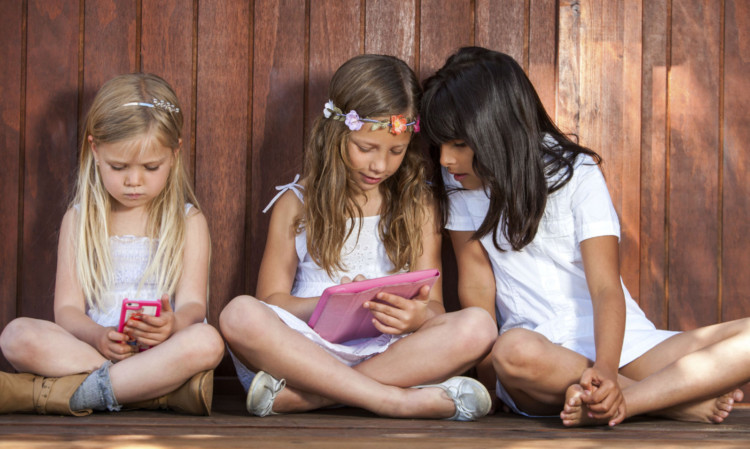One of the three Rs is under threat as a new report suggests that many pre-school children are unable to use a pen or pencil properly because they’re so used to working on tablet computers. Caroline Lindsay finds out more.
Young children could struggle to learn simple tasks like using a pen or pencil after being exposed to an “overwhelming” amount of technology before they start school, a poll conducted by daynurseries.co.uk has found.
Pre-schoolers need to be protected from a “technological creep” which has seen items such as tablets increasingly used in nursery schools, but a poll conducted by the website found just one in four people think children benefit from information and communication technology (ICT) in their early years.
Davina Ludlow, director of daynurseries.co.uk, an online guide to nurseries, said: “Children are increasingly exposed to an overwhelming amount of technology at an early age,” adding that she was concerned that tablet computers are “displacing the traditional methods of learning and play activities.
“This poll shows that the majority of people clearly want to see early education and childhood play protected from this technological creep.”
Sue Palmer, literacy expert and author, said: “I think what children really need up to the age of seven is real life in real space and real time, which means three dimensional experiences.
“We already have problems with children not being able to hold a pen or pencil. But we are giving our kids instant gratification all the time with ICT and it makes it harder for them to persevere with something that takes a while to learn.”
Official figures published last month showed that almost half of boys struggle to write simple stories, lists or even a letter to Santa at age five.
The statistics, which show how well young children are doing in areas such as literacy, maths and physical development before they start formal schooling, showed a clear gender gap, with girls ahead of their male classmates.
Just over half of boys achieved at least the expected standard in writing, the statistics show, compared with seven in 10 of girls.
In reading, which includes being able to use cues such as pictures to read and understand basic sentences, just under two-thirds of boys met the expected standard, along with three-quarters of girls.
When it came to maths, over a third of five-year-old boys were unable to count to 20, or do simple adding and subtracting, compared with 28% of girls.
The 2010 national guidance from Education Scotland offers specific guidance from pre-birth to age three, including important information on brain development. From the ages of three to 18, the Curriculum for Excellence builds on the foundations of this early programme. The ever-increasing domestic use of digital gadgets means that 21st-century children are growing up in homes very different from even just a decade before, so it’s inevitable that ICT is playing its part in the modern-day curriculum. Daynurseries.co.uk cites John Siraj-Blatchford, honorary professor at the University of Swansea centre for child research, who states there was substantial evidence for using ICT in early childhood. Christine Stephen, research fellow in the School of Education at the University of Stirling, agreed: “Children do enjoy using an assortment of technological gadgets and they seem to be very intuitive with them. We don’t have any evidence that it stops them doing anything else.
“As far as not knowing how to hold a pen, pencil or even a paintbrush for that matter, I’m not sure that I’d expect a three-year-old to be terribly good at that, anyway, at that age. I’d be concerned if they didn’t have a pincer grip but to say they don’t know how to hold a pencil sounds alarmist to me.
“Most parents are aware of the debate and it is just a debate on the dangers of spending too long on technological gadgets, and they have rules in place about how long their child can spend on them. The research from a seminar we ran showed that parents thought that there was a time and place for computers and that technology was not the answer for everything. Parents were generally of the opinion that technological toys were less likely than traditional toys to stimulate children’s imagination and we found few examples of children using technological toys in their imaginative play.”
Carol Craig, nursery operations manager of Busy Bees Nurseries, which has nurseries across Courier Country, said: “Obviously the Curriculum for Excellence is keen to promote ICT after all, this is the 21st century and children are coming from homes where technology is now the norm. In our pre-school rooms we have a basic computer and by the time the children leave to go to school they can competently navigate a computer. We also have flip cameras which children use to make video recordings and dictaphones. We haven’t yet actively gone down the tablet route, partly because of funding, but also because the children have access to the internet via the computer. Mind you, I think most pre-school practitioners would like to have a tablet so that day may come.
“But it’s all about balance the use of technology is controlled and part of the cumulative experience. A standard play room set up would include a writing table, woodwork table, home corner and sand and water play. At every station there will be paper and pencils for ‘mark making’ what we call ‘writing’ at a very young age, which will eventually turn into recognisable letters.
“So, while there are young children who can expertly navigate between apps on his mum’s iPhone, I’ve never heard of a child who can’t hold a pencil to mark make. ITC is just a part of the breadth of opportunities offered by the curriculum.”
